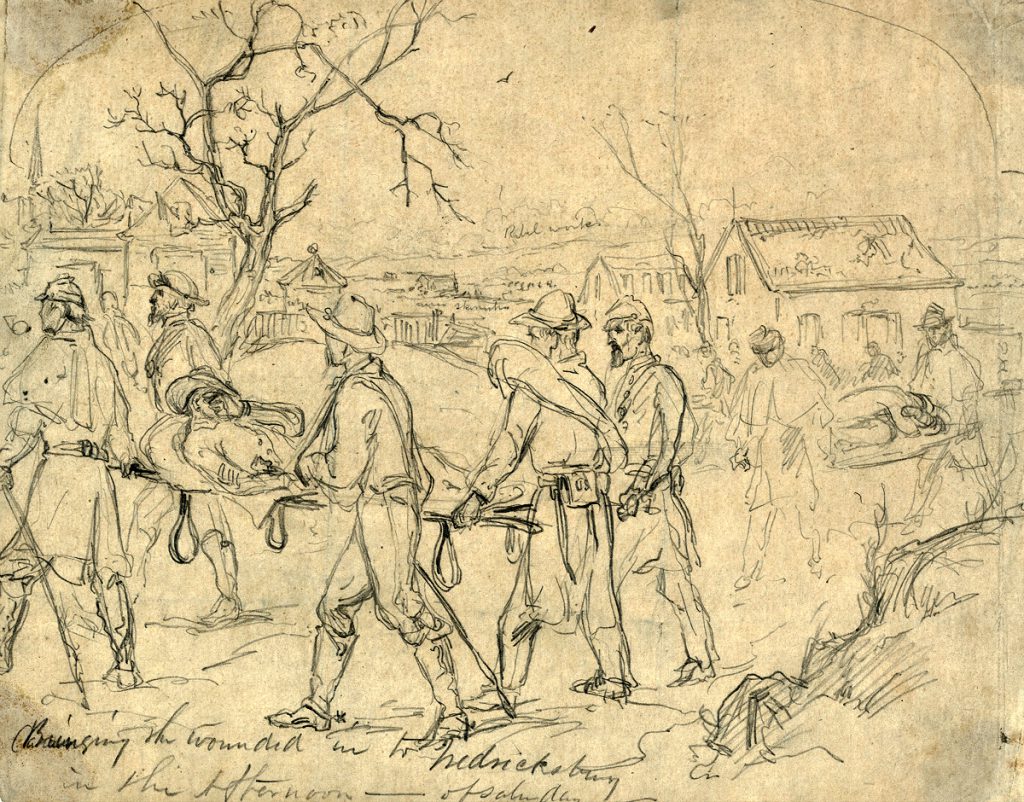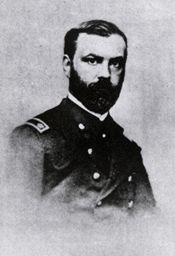Table of Contents
Dr. John Brinton and his assistant trudged over a pontoon bridge on December 15, 1862 spanning the Rappahannock River near Fredericksburg, Virginia on an unusual errand. All around them the Union Army was in full retreat. The pair of medical officers, on duty with the newly established Army Medical Museum, carried a strange cargo: medical specimens collected in the makeshift field hospitals established during the bloody battle at Fredericksburg. Suddenly, a Confederate shell streaked over their heads and exploded on the far shore. Dr. Moss, the assistant curator at the Museum, wryly quipped: “What a blessed escape, for what a wretched ending it would have been to one’s life, to have been swept into the river on an ignominious retreat, holding on to a bag of bones.”

John Brinton’s experience during the Civil War differs from that of most medical officers to serve during the conflict. In the summer of 1862, the 37 year-old surgeon from Philadelphia was appointed as the first curator of the Army Medical Museum in Washington. The young doctor described his role at the Army Medical Museum in his memoirs, written 30 years after the conflict and based upon his war-time correspondence: “to collect and arrange in the military medical museum all specimens of morbid anatomy which may have accumulated during the commencement of the rebellion in the various United States hospitals…”
In his efforts to ship medical specimens back to the Army Medical Museum, John Brinton would often bribe soldiers and train conductors with brandy to ensure their discretion. That story served as an inspiration for the museum’s partnership with Tenth Ward Distilling Company which led to the creation of Brinton’s Brandy
By the time of his appointment, Brinton had already risen rapidly within the Union Army. An 1852 graduate of the prestigious Jefferson Medical College in Philadelphia, Brinton found a war-time role in 1861 with Ulysses S. Grant’s Army of the Tennessee, where he served as medical director. There, Brinton earned the trust of his field officers and the new leader of the Army Medical Department, Surgeon General William Hammond. When Hammond decided upon opening a museum to collect, study, and display medical specimens procured during the conflict, he called Brinton to Washington to take up the job as curator.
In September 1862, the job took Brinton north of Washington to the bloody battlefields of Maryland. In the wake of the Battle of Antietam, a telegram from Surgeon General Hammond called him to Frederick “to superintend the selection of specimens for the Pathological Museum.” He toured the war-torn landscapes of South Mountain and Antietam and watched as the dead were buried in hasty mass graves. But his attention quickly turned to the field hospitals where countless surgeries continued to take place in the days after the Battle of Antietam.
Why was he so interested in the hospitals? His role as curator required him to encourage the army’s surgeons to collect specimens for preservation and study at the Army Medical Museum. In this role, he took to shocking the medical personnel in order to get their attention. This included digging up buried limbs which had been amputated in the aftermath of the battle.
“It was hard enough to be worked day and night in those great surgical emergencies… to expect the rough preparation necessary to preserve mutilated limbs for the Museum. These were usually buried in heaps. To overcome all these difficulties and to set an example, I visited frequently our battlefields… I had the opportunity of showing practically to the operating surgeons and to their assistant staffs, what it was that we really wanted… Many and many a putrid heap have I had got out of trenches where they had been buried, in the supposition of an ever-lasting rest, and ghoul-like work have I done amid surrounding gatherings of wondering surgeons, and scarcely less wondering doctors. But all saw that I was in earnest and my example was infectious.”
This work took him to numerous battlefields, including Fredericksburg in December 1862. Their “ghoul-like work” required them to remove mutilated body parts for study and surely astonished more than a few sentries they were forced to pass by on their travels. But the specimens collected were utilized for a noble purpose – to further the study of medicine, improve battlefield surgery, and preserve a lasting record of the evolving medical care administered during the nation’s bloodiest war.

Brinton continued working with the museum until September 1864, when intensely partisan war-time politics caught up with him. The curator’s infamous cousin, George Brinton McClellan, was running against President Abraham Lincoln as a Democratic challenger and, for this, John Brinton lost his job. He continued serving with the United States Army through the remainder of the war and emerged as one of the most renowned medical practitioners in the United States.
His work at the Army Medical Museum laid the groundwork for the Medical and Surgical History of the War – a landmark study of war-time medicine that helps us better understand our nation’s bloodiest war. He passed away in in his hometown of Philadelphia in March 1907 at the age of 74.
Learn more from Jake Wynn, the post’s author
Want to learn more? Follow us on Facebook and Twitter to discover more stories from Civil War medicine!
Become a museum member and support our educational programs and research like this.
About the Author
Jake Wynn is the Director of Interpretation at the National Museum of Civil War Medicine. He also writes independently at the Wynning History blog.



Leave a Reply
You must be logged in to post a comment.